All Things Bukit Brown congratulates Raymond and Charles Goh who have been chosen by Chinese news daily Zaobao to be included in their list of Personalities of 2014. For the Brownies, it is a timely recognition for the 2 brothers who have been exploring and uncovering the “lost” heritage and history of Singapore since the mid 2000s. Their hard work, sheer doggedness in research and walking the ground, is our inspiration, and we are proud to claim them as Brownies and proud, we walk with them
===============================================
Translated Article by Raymond Goh
2014 Personality of the Year by Zaobao weekly, Dec 28, 2014
Raymond Goh (51) and Charles Goh (46), Looking at history through the departed
If not for praying to one’s ancestors, one would not usually go to the cemetery. That day the reporter asked a taxi driver to drive her to Bukit Brown cemetery. The driver was not very happy, and so she has to alight at approx. 200 metres from the cemetery at the road cross junction. But the Goh brothers does not have any sort of taboo. They keep on bringing people to the cemetery to look for their roots, rediscovering old tombs hidden in the depths of the forest, bringing history back to life.
Ever since Sep 2011 when news broke out that part of Bukit Brown has to give way to a road and approx 5000 tombs has to be exhumed, nearly twice a month during weekends and public holidays, one would see volunteer guides from all walks of life known as “Brownies” wearing Bukit Brown heritage T shirts, and guiding the public on the history and heritage of Bukit Brown.
Raymond and Charles Goh are a familiar pair among the Brownies and the pioneering guides among them.
Bukit Brown Pioneering Explorers
Charles Goh is a construction safety manager and has from young like to explore the unknown to get to the root of matters. Some things will be forgotten or disappear as one grow up, and Charles hope to revive the forgotten collective memories. Since the SARS crisis of 2003, Charles responded to the call of STB and together with his brother registered as tourist guides. They do voluntary guiding for visitors to the cemetery, and let these visitors know Singapore in an unique way.
Together with Raymond Goh, a pharmacist, they founded Asia Paranormal Investigators, as a step forward to fulfil their ambition to research all things unknown. Since 2006 they also started to lead tours to Bukit Brown, do research into tombs and even design a cemetery map for the public to do DIY tours on their own.
Raymond said that Bukit Brown and the surrounding Seh Ong and Hokkien cemeteries has a total of 200,000 tombs, with the earliest dating all the way to 1826. From that year to the closure of the cemeteries in the early 1970s, one can see 150 years of changes and transformations reflected through the tombstones of Bukit Brown. Our history is gathered piece by piece from the collective stories of all these tombstones.
2014 Great Finds
Through the efforts of Charles, Raymond and the Brownies, there has been a surge in interest to find one’s ancestor. Due to the passage of time and insufficient information, the success rate of finding one’s ancestor for these tombs is only about 50%, but the rediscoveries of pioneers’ tombs provide much encouragement to the Goh Brothers. This year alone, the two great finds are the founder of Hong San See temple Neo Jin Quee and the family cluster tombs of Lee Kuan Yew maternal ancestors.
According to the archives, Hong San See founder Neo Jin Quee was relocated to Bukit Brown cemetery. When Raymond Goh first encountered this tomb, he combined forces with local history researchers Walter Lim and Ang Yik Han to research into this tomb and finally confirmed the identity of this tomb. The discovery of Neo Jin Quee’s tomb and the tombs of his wife, son and daughter-in-law provide important clues to the study of the immigrant stories of early Lam Ann people to Singapore.
Apart from this, in Jun this year, a news report to find the rickshaw puller Koh Teong Koo made Raymond recalled about Lee Kuan Yew maternal grandfather Chua Kim Teng and maternal grandmother Leong Ah Soon. Based on the clue provided by tombkeeper Soh Ah Beng, Raymond and Walter Lim finally found the tombs of Chua Kim Teng, his second wife and his father’ tombs. They later managed to find Leong Ah Soon’s tomb from the burial register, that is Chua Kim Teng’s third wife. The Chuas were a typical Peranakan family, and Chua Kim Teng was a successful merchant. These finds provide important historical information for the study of this early Chua pioneer family.
Apart from graves, Charles Goh is also interested into heritage sites and ruins. Not long ago, together with NHB Group Director (Policy) Alvin Tan, they rediscovered a century old lunatic asylum wall, which provide valuable information for the study of this early institution.
The greatest difficulty in finding graves is not mosquitos and insects bites, nor wild snakes or animals, nor wild vegetation, but the limited information and resources to find the graves.
Although there are burial records in Bukit Brown, many descendants does not know the dates their ancestors passed away, and some can only remember their ancestors’ Chinese names, while the records are in English. The lesser the information, the more difficult will be the tomb find.
As such, Raymond said that sometimes it require more than the efforts of one or two persons, but the combined efforts and expertise of many volunteers to help find a tomb.
As for 2015, the Goh brothers will keep on their volunteer work of researching and finding tombs, and their mission is to find an earlier tomb than 1826 as there were already Chinese people then who died before that.
By Mok Mei Ngan
Catch a video of Raymond Goh on zaobao.com, sharing his interesting discovery of Bukit Brown Cemetery here
================================================
Zaobao weekly – 2014 Personality of the Year
They may not be famous people in the limelight,
But yet each in their chosen field give out their own light and heat and leave behind beautiful imprints in 2014
There is a Western proverb “The devil is in the details”, which means that it is in the details which spell success
These six personalities selected by Zaobao Now are chosen especially for their insightful analysis and acute observation, taking care of the whole situation, yet not leaving out the smallest details to ensure success for their endeavours
They are :
Two relatively unknown “amateur archaeologists” brothers Raymond Goh and Charles Goh who started to find old tombs to return back history. In this rapidly growing city of ours, they search for old tombs and uncover lost history. They also bring people to cemeteries to search for their roots and let the light shine once more upon the hidden tombs in the forest, bringing history back to life
Artist Ong Keng Seng who revamped the Singapore International Festival of Arts to reach out to a wider audience. His 12 chosen productions attracted widespread discussion
Chef Julien Royer from Swissotel Stamford Jaan restaurant for his passon in the culinary arts and for winning multiple culinary awards, and let foreigners look at Singapore food scene
Photographer Sim Chi Yin. Originally an ST correspondent based in Bejing, she give up journalism for photography, and use her passion for the lens to reflect Chinese mainstream society in China. In July this year She became the only Asian photographer to join the Internationally renowned VII Photo Agency. In Oct she was selected by Her World magazine as this year Young Woman Achiever
Christopher Lee Meng Soon for beig the first non-Taiwanese to win the Best Actor Award in the 49th Golden Bell Awards. His win means that the top awards coming from Taiwan for the Cinema, Music and TV all have been won by our local artistes, and mean that here we do have internationally recognized acting talents.
JJ Lin for winning the 25th Golden Melody Awards for best mandarin male singer. He also won two awards from the 19th annual Composers and Authors Society of Singapore (COMPASS) for top local artiste for the 6th consecutive time and best song writer for the 4th time
In Bukit Brown, one can find various forms of art, structure and inscriptions, auspiciously incorporated within individual tombs to enhance the happiness and prosperity of the deceased’s family.
Tomb whisperer, Raymond Goh translates a poem found on the couplets from a tomb in Bukit Brown:
金羊恆率舞
土牛畫來潮
坤輿呈秀氣
艮岫献英靈
The Golden Sheep leads the eternal dance
The Earthen Ox draws the rising tide
The earth presents the elegant vigor
The hill offers the heroic spirit
On a different tomb, Raymond translates the poem engraved on its couplets, with the help of Alex Loh and Tan Kim Hong, members of the Heritage Singapore – Bukit Brown Cemetery Facebook group:
青龍(去來)寶案
白虎會佳城
靈山鍾地脉
秀水啟人文
The green dragon forms the mountain in front of the tomb
The white tiger meets with a good water formation
The spiritual mountain concentrate the earth veins
The elegant water produces academic descendants
Do join the discussions in the Heritage Singapore – Bukit Brown Cemetery Facebook group page, a platform for all members to learn, as well as contribute and share their knowledge in all things related to heritage, habitat and history.
A postscript : Saturday 2 nd August, descendants are brought to visit the cluster of tombs belonging to Chua Kim Teng, Seow Geok Luan and Chua Eng Cheong by Raymond Goh
“Touching and joyous moments as descendants of Chua Kim Teng’s family pay respects to their ancestors for the first time. Even the ground was pulsating with energy as my compass luopan went haywire” Raymond Goh.
***
Today’s Chinese newspaper Zaobao, reported on a significant find of Lee Kuan Yew’s maternal ancestry in the depths of the forest of Bukit Brown. It is the find of the year (2014) for Bukit Brown researchers and bloggers Raymond Goh and Walter Lim.
Please click on image to enlarge
“The 4 related tombs ranging from 70 to 127 years in Bukit Brown and Greater Bukit Brown (Lao Sua) has been rediscovered by local historical researchers and are valuable resources for the study of our founding Prime Minister Lee Kuan Yew’s maternal grandfather, Chua Kim Teng family history “
The find was discovered on 1 st July. From photos sent to Raymond by a tomb keeper in the area, Raymond subsequently on the same day, verified it on site as belonging to Lee Kuan Yew’s family. The find was kept under wraps to allow Zaobao correspondent Chia Yen Yen, time to conduct further research with family members of Lee Kuan Yew, specifically his brother, Dr Lee Suan Yew contributed this family photo to the article.
The 4 tombs were identified as belonging to Chua Kim Teng and his two wives Seow Geok Luan and Leong Ah Soon, and Lee Kuan Yew’s maternal great grandfather Chua Eng Cheong. They are from Lee Kuan Yew’s mother side ie Mrs Lee Chin Koon nee Chua Jim Neo. Leong Ah Soon’s grave is situated in Bukit Brown Cemetery, the other three are situated close together in a family cluster in Lao Sua Hokkien Cemetery which is located in the hill known as Bukit Brown in old maps. Lau Sua Hokkien Cemetery is adjacent to Bukit Brown Cemetery.
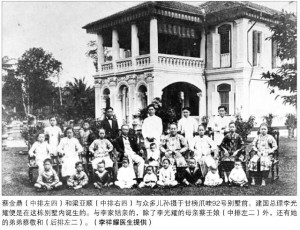
Chua Kim Teng (LKY’s maternal grandfather – centre row, 4th from left), Leong Ah Soon (centre row, 4th from right) Lee Kuan Yew’s mother Chua Jim Neo (centre row, 2nd from left) and her brother Chua Kheng Hoe (last row, second from left) was also related by marriage to Lee family (Family Photo from Lee Suan Yew)
This extended family portrait was taken at 92 Kg Java Rd bungalow where Lee Kuan Yew was born.
Additional info on the house: The Cheng Kee Hean Association celebrated its silver jubilee in June 1918 with the taking of group photograph and a thanksgiving ceremony at the house of Mr Chua Kim Teng (vice-president) in Kampong Java Road.
The link to the FB posting by Raymond Goh when he first identified the tombs here (only accessible if you have a facebook account)
“The inscriptions also attest to the rich burial Chinese culture and customs being practiced in Bukit Brown cemetery. As the dragon dance and flag beats, the gates of Heaven are opened (Chua Eng Cheong’s tomb inscriptions)” Raymond Goh
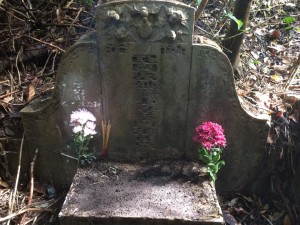
Mdm Seow Geok Luan’s tomb (Chua Kim Teng”s wife), with tomb design 五蝠 (福) 捧壽 five bats (homophonic with fortune) encircling longevity (photo Raymond Goh)
****
Translation of Zaobao Article
The tombs of Chua Ying Chiang and son Chua Kim Teng were rediscovered by local history researchers, Raymond Goh and Walter Lim. Although they have seen the tombs before, it left no earlier impression on them until a news report about the rickshaw puller who saved Lee Kuan Yew’s life emerged recently. Raymond then remembered, Lee Kuan Yew had mentioned his maternal grandfather Chua Kim Teng and grandmother Leong Ah Soon in his memoirs. Coincidently at the same time, Soh Ah Beng, a tomb keeper had used his mobile phone to take a photo of the tombstone and forwarded it to Raymond who later confirmed that the tombs belong to the ancestors of the Chua family.
Zaobao correspondent, Chia Yen Yen together with Raymond Goh and Walther Lim specially made a trip to the deep forested area of Bukit Brown known as “Lau San”, meaning old hill to substantiate the find. They also discovered the tomb of Chua Kim Teng’s second wife, Seow Geok Luan next to Chua Ying Chiang (Chua KimTeng’s father). However, the tomb of Lee Kuan Yew’s maternal grandmother, Leong Ah Soon was missing. On conducting further research and the Bukit Brown’s burial register, they finally located the tomb of Leong Ah Soon.
Two descendants of the Chua family, retired accountants, Seet Keong Fatt and Seet Keong Hoe, told Zaobao, that every year during “Ching Ming”, they would visit their maternal grandmother, Leong Ah Soon’s grave to pay their respects. However, they were no longer aware of the whereabouts of their maternal grandfather and great grandfathers’ graves. The mother of the two Seet brothers, Chua Swee Neo is the the youngest daughter of Chua Kim Teng and Leong Ah Soon. Chua Swee Neo is also the younger sister of Chua Jim Neo (Lee Kuan Yew’s mother). She had married Seet Cheng Kang in a traditional Chinese wedding ceremony in 1937 and their wedding was reported in the press.
Based on the “Memoirs of Lee Kuan Yew”, for a married daughter’s family to live with the in-laws (as was the case for Lee Chin Koon and Chua Jim Neo living with the Chuas) was not accepted in a traditional Chinese family. But to a Chinese Peranakan family from Malacca it was common.
Although Chua Kim Teng was born in Singapore, his father Chua Ying Chiang came from a typical Peranakan family in Malacca. Chua Ying Chiang’s tomb at the 127 year old “Lau San” of Bukit Brown is very large, estimated to be 40 feet in length and 24 feet in width, reflecting on his illustrious life. However, it is a pity that what information about his life that can be found today is limited.
Chua Kim Teng’s second wife, Seow Geok Luan’s tomb is next to Chua Ying Chiang, and much smaller.
According to the old map, the 3 tombs are at the “Lau San” of Bukit Brown.
The inscription on Chua Ying Chiang’s tombstone recorded his death date as April 1887. On the tombstone are carvings of dragons, unicorns, cranes and deer. This reveals the beliefs and importance placed on the “dragons’ veins” and “fengshui” meaning posterity and prosperity.
The other couplets are “龙挺旗鼓天门开、虎拒艮宫地户闭and “排衙之砂真有情、癸向艮流富贵龙” which translates to : “As the dragon dance, and the flags beat, the gates of heaven are open. The surrounding terrain gives support, and prosperous and illustrious the dragon becomes”
The names of Chua Ying Chiang’s son, Chua Kim Teng and daughters: Beow Neo, Tam Neo and Cheng Neo are inscribed on the tombstone. However, based on family tree records, the names of the other two sons, Kim Tiong and Kim Tye are missing from the tombstone.
Chua Kim Teng (1865-1944) outlived his 3 wives. On his tombstone are names of 6 sons and 8 daughters. However, the name of his adopted son, Keng Seng (adopted by wife Leong Ah Soon) was omitted. His other 2 daughters, namely Sim Neo and Siew Neo were also omitted. There is a possibility that that the names of his descendants were copied from the tombstone of his second wife, Seow Geok Luan which explains why the 2 youngest daughters’ names were omitted.
According to Dr Lee Suan Yew, both his paternal grandfather, Lee Yun Long and his maternal grandfather, Chua Kim Teng died during the Japanese Occupation. He was 11 years old when his maternal grandfather passed away and he still remembers his mother Chua Jim Neo making arrangements for his grandfather’s funeral and burial.
Chua Kim Teng was born in 1865 and died in 1944 . As recorded on his tombstone, his ancestors are from Fujian, Zhangzhou, Haicheng, Zhen village (福建漳州海澄陈莊).
Dr Lee Suan Yew has the impression that his maternal grandfather was wealthy, lived in a big house, was generous and often gave his grandchildren money to buy preserved olives, sour plums and other snacks. He said that his brother Lee Kuan Yew was born in his maternal grandfather’s 2-storey bungalow at No. 92 Kampong Java. He has an old photo of the family, including his mother, maternal grandfather and grandmother, aunties and uncles, taken in front of the big bungalow.
The Chua family later moved to another big house at Lorong L, Telok Kurau. Based on a “For Rent” advertisement in the Straits Times dated 28 July 1928, the bungalow at Kampong Java had water and gas supply, telephones lines, a garage and a tennis court. It was a magnificent bungalow.
Dr Lee said that his maternal grandfather had three wives. First wife, Seow Chue Luan and second wife, Seow Geok Luan are sisters. His maternal grandfather had one son and 3 daughters with his first wife and 2 sons and 3 daughters with his second wife. He had 3 sons and 4 daughters with his third wife.
Based on records in the “Memoirs of Lee Kuan Yew”, Leong Ah Soon was a Hakka woman from Indonesia. She was a young widow with 2 young children. Lee Kuan Yew’s mother, Chua Jim Neo is the eldest daughter of Chua Kim Teng and Leong Ah Soon.
According to Dr Lee, besides the Kampong Java and Telok Kurau bungalows, his maternal grandfather owns several properties at Claymore Road. The properties were subsequently sold due to the Great Depression.
Based on old newspaper records, Chua KimTeng was the owner of a market at East Coast. Lee Kuan Yew in his memoirs mentioned that his maternal grandfather owned a large rubber plantation and the family sometimes took the bullock cart to the plantation for vacations.
Although Chua Kim Teng was a successful businessman, he was only actively involved in the mutual aid organisation Cheng Kee Hean Association which was founded in 1893. In November 1921, on the 25th anniversary of the association, a celebration dinner was held at the Kampong Java bungalow. Chua was then the Vice President of the association.
The tombstone of Lee Kuan Yew’s maternal grandmother, Leong Ah Soon is on a hillside of the Bukit Brown cemetery. Although the tombstone is not considered big, neither can it be considered small and is well kept. According to records in “Memoirs of Lee Kuan Yew”, Leong Ah Soon had 9 children. However, on her tombstone inscribed were the names of 7 sons and 10 daughters, a total of 17 children. There were also names of 7 grandsons and 6 granddaughters.
According to Dr Lee Suan Yew, the name of Leong Ah Soon’s adopted son, Chua Keng Seng (formerly Tan Keng Seng – son of sworn sister) was also inscribed on the tombstone. Leong Ah Soon’s daughter, Watt Neo is from her previous marriage. The names of Leong Ah Soon’s sons and daughters which were inscribed on her tombstone include the children of Chua Kim Teng’s first and second wives.
It is interesting to note that the couplet “源前皆赤子,益上是青天” on the tombstone has been amended and it differs from the original couplet “眼前皆赤子、头上是青天” which refers to court officials who are impartial. Does it imply that she treated all her children equally? Another couplet reads“自得山中趣,谁论世上名”. It literally translates to “when you know the pleasures of the hills , who cares about fame in one’s lifetime”.
Not only did Leong Ah Soon marry her daughter, Chua Jim Neo to Lee Kuan Yew’s father, Lee Chin Koon, she also took Lee Chin Koon’s sister, Lee Kim Neo as the bride for her eldest son Chua Keng Hoe.
Lee Kuan Yew, in his memoirs, said that his maternal grandmother had a different view on his education. His maternal grandmother had insisted on sending the young Lee Kuan Yew who was barely 6 years old to a private class in an attap house to learn and recite the Chinese Classics. When he complained to his mother about the difficulties he had learning Chinese, his mother pleaded with his maternal grandmother on his behalf to let him discontinue Chinese lessons. However, his maternal grandmother insisted that he learned some Chinese and transferred him to a private school in Joo Chiat. The school was impressive with 10 classrooms and had between 35 to 40 students per class. The young Lee Kuan Yew still had difficulties learning Chinese. Three months later, Lee Kuan Yew’s mother again pleaded with his maternal grandmother who finally agreed to let him transfer to an English school.
Based on records on Leong Ah Soon’s tombstone, she died on October 9, 1934. She was born in 1881 and was 16 years younger than her husband, Chua Kim Teng.
Based on archival records, Leong Ah Soon had on the eve of World War I, in 1916, with the joint effort of women in Malaya purchased fighter jets as gifts for the British government. She had donated ten dollars.
(Thanks to Elaine Tan for the translation with inputs from Raymond Goh)
李光耀外家先人四古墓密林中寻获
谢燕燕
2014年07月29日
苏亚明、吴安全和李志强(左至右)摄于建国总理李光耀曾外祖父蔡应昌的墓前,这个藏在深山老林的古墓已有127年历史。(严宣融摄)
新恒山亭与武吉布朗四座有70年至127年历史的老墓,最近被本地文史工作者重新发现,成了研究建国总理李光耀外祖父蔡金鼎家族的重要史料。
李光耀的曾外祖父蔡应昌、外祖父蔡金鼎和蔡金鼎第二任妻子萧玉銮的墓,多年来深藏在新恒山亭的深山老林里。蔡金鼎的第三任妻子,也是李光耀的亲外祖母梁亚顺则葬在武吉布朗坟场内。
这四座能为蔡家的家族史提供珍贵史料的老墓,是在本报于6月29日刊登了李光耀与人力车夫高长古的故事后,被本地著名寻墓人吴安全和文史工作者林志强找到的。
谢燕燕 报道
chiayy@sph.com.sg
蔡应昌、蔡金鼎父子的墓,吴安全其实过去见过,但没多加留意,也不清楚墓主人身份,直到阅读了本报《寻找人力车夫高长古》一文,才想起建国总理李光耀在回忆录中提到的外公蔡金鼎和外婆梁亚顺。
更巧的是,他的朋友苏亚明(51岁)正好在那个时候用手机,把蔡应昌墓和蔡金鼎墓的照片传给他,马上引起了他的兴趣。专门帮人打理墓园的苏亚明,从小在陈 牛廊(武吉布朗昔日村子)长大,对新恒山亭和武吉布朗了如指掌。他认识吴安全后,每次发现大型古墓,就会拍照传给吴安全看。
古墓藏在密林里
本月中的一个早上,本报记者随吴安全、苏亚明和林志强走入被喻为“老山”的新恒山亭后,发现蔡应昌、蔡金鼎和萧玉銮的墓确实藏在人迹罕到的密林里,蔡家后人恐怕早已找不到那里。苏亚明是因为经常在山里走动,加上他曾祖父的墓刚好与蔡金鼎墓为邻,才会发现这一组古墓。
吴安全、林志强找到蔡家三位先人的墓后,发现李光耀外婆梁亚顺的墓不在其中,于是翻查旧档案,通过下葬记录册找到她位于武吉布朗的墓。
本报后来走访李光耀的弟弟李祥耀医生,从李医生那里拿到蔡家后人所整理的一份简单家谱,再把这家谱与墓碑上的名字对比,理出了一个头绪来。
蔡家另外两位后人,退休会计师薛强发和薛强和告诉本报,他们每年清明都会到外祖母梁亚顺的墓拜祭,但早已不清楚外祖父和曾外祖父的墓在哪里。如今被重新发现,他们将找时间到坟前祭拜。
这两兄弟的母亲蔡修娘是蔡金鼎与梁亚顺所生的最小女儿,即李光耀母亲蔡壬娘(又作任娘,过去译成认娘)的妹妹。蔡修娘是在1937年与薛清江举行华人婚礼,当时还上报。
李光耀曾外祖父百年古墓极大
《李光耀回忆录》中说,在传统华裔家庭里,结了婚的女儿与丈夫、孩子若住在外家,通常不为社会所容,但对来自马六甲的土生华人家庭来说,这却是常有之事。
能找到的资料很有限
蔡金鼎虽是在新加坡出世,他父亲蔡应昌却是来自马六甲的土生华人,他们可说是典型的峇峇家庭。蔡应昌位于新恒山亭的127年古墓非常大,估计长40英尺,宽24英尺,显示他生前显赫,只可惜今天能找到的资料很有限。
蔡金鼎和第二任妻子萧玉銮的墓就在蔡应昌墓旁边,但规模小得多。
根据旧地图,这三座墓所处的位置就在原来的布朗山。
蔡应昌墓碑上记录着他是在“光绪丁亥年岁次梅月吉旦”即1887年4月去世,碑上面有朱雀浮雕,墓肩有龙的雕刻,供桌下有麒麟、仙鹤和鹿的图案。
墓前对联则显示这是很讲究龙脉与风水的古墓。里头的对联写着“龙挺旗鼓天门开、虎拒艮宫地户闭”,外面的对联是“排衙之砂真有情、癸向艮流富贵龙”。
蔡应昌的墓碑上刻着孝男金鼎和孝女妙娘、淡娘和贞娘,不过蔡家后人所整理的家谱则显示他还有另外两名儿子蔡金忠和蔡金泰。他们的名字为何不在墓碑上则不得而知。
比三名妻子长寿的蔡金鼎(1865-1944),墓碑上刻着六男八女的名字,当中少了梁亚顺所领养的敬成,却不清楚为何还少了两名小女儿心娘与修娘的名字。一个可能性是刻碑文时“抄袭”萧玉銮的碑文,以致漏掉两名小女儿。
萧玉銮是在中国刚“变天”,辛亥革命推翻满清王朝之际离开人世的。她逝于“辛亥十月十六日旦”(1911年12月6日),孙中山当时正从美国回返中国途中,所搭乘游轮一个多星期后抵达新加坡,他还在陈武烈位于花芭山腰的金钟别墅住了一晚。
中国是在1912年1月1日才改年号为民国元年,但萧玉銮的墓已率先启用民国年号,只不过当时情况有点混乱,把国号、年号颠倒用,以致出现“中华辛亥十月十六日旦”和“民国故妣谥玉銮萧氏墓”。
李光耀在外公别墅出世
李祥耀医生说,他祖父李云龙和外公蔡金鼎都是在日本占领新加坡期间离开人世。外公去世时他11岁,至今还记得母亲蔡壬娘操办丧礼的情景。
生于1865年,卒于1944年的蔡金鼎,墓碑上的祖籍是福建漳州海澄陈莊。
在李祥耀印象里,外公相当有钱,住在很大的房子里,为人很慷慨,经常给孙子们钱去买橄榄、酸梅等零食。
洋房很有气派
他说,大哥李光耀是在外公位于甘榜爪哇92号的两层楼别墅出世的,他至今还有一张旧照片,是他外公、外婆、母亲、众多阿姨和舅舅们在那栋大房子前拍摄的全家福。
蔡家后来搬到直落古楼罗弄L的另一栋大房子。根据1928年7月27日刊登在《海峡时报》的一则出租广告,甘榜爪哇的别墅有煤气、水、电话、车库和网球场,是很有气派的洋房。
李医生说,外公娶过三名妻室,第一任妻子萧翠銮和第二任妻子萧玉銮是姐妹,他和萧翠銮生了一男三女,和萧玉銮育有二男三女,和第三任妻子梁亚顺生了三男四女。
根据《李光耀回忆录》的记载,梁亚顺是来自印度尼西亚坤甸的客家妇女,嫁给蔡金鼎之前是育有两名年幼孩子的年轻寡妇。李光耀的母亲蔡壬娘是她与蔡金鼎所生的长女。
李医生说,外公除了拥有甘榜爪哇和直落古楼的洋房,还曾买下克雷摩路(Claymore Road)的好多栋房子,但后来受到经济大萧条影响而将之变卖。
林志强找到的旧报章资料显示,蔡金鼎曾是东海岸巴刹的业主,李光耀在回忆录中则曾提到外公在菜市拥有大片树胶园,他们家有时会坐牛车到园丘度假。
蔡金鼎虽是成功商人,但从旧档案看,他只活跃于1893年创立的互助组织正气轩(Cheng Kee Hean Association)。1921年11月,这个组织庆祝25周年时,曾在蔡金鼎上述甘榜爪哇别墅举行盛大庆祝会,他当时任正气轩副会长。
外婆梁亚顺坚持
要李光耀读中文
李光耀外婆梁亚顺的墓,坐落武吉布朗半山腰,不是很大,却也不小,维持得相当好。根据《李光耀回忆录》,梁亚顺生过9名儿女,但墓碑上却刻着7名孝男和10名孝女,共17名儿女的名字!另外还有7名内孙和6名内孙女。
李祥耀医生说,外婆墓碑上的一名儿子蔡敬生其实是她结拜姐妹的儿子,本姓陈,后来被外婆领养。另一名女儿发娘(也有写成活娘)则是梁亚顺与前夫所生女儿。梁亚顺墓碑上的众多儿女,包括蔡金鼎与两位萧氏所生儿女。
最有意思的是墓前的对联,把原本指为官清廉的“眼前皆赤子、头上是青天”改成“源前皆赤子,益上是青天”。这是否在比喻她公平对待众多儿女,把他们视为“赤子”?另一对联是“自得山中趣,谁论世上名”。
梁亚顺与蔡金鼎除了把女儿蔡壬娘许配给李光耀的父亲李进坤外,还让两人所生的大儿子蔡敬和迎娶李进坤的妹妹李金娘。
李光耀在回忆录中说,这位外祖母对他的教育很有一套看法,还不满6岁便坚持把他送到设在亚答木屋内的私塾,老师每天让孩子背诵古书。
他向母亲诉苦后,母亲代他向外婆说情,但外婆坚持他一定要读些中文书,于是送他到如切台浚源学校。这学校设施像样多了,有10间课室,每班35至40名学生,但年幼的李光耀还是觉得华文难学。两三个月后他再向母亲恳求,这一次外祖母终于答应让他转到英校。
根据坟墓上的记录,李光耀这位坚持要他读点中文的外婆是在民国二十三年九月初二,即1934年10月9日与世长辞。她生于1881年,比蔡金鼎小了16岁。
从旧档案中还知道梁亚顺曾于1916年,即第一次世界大战前夕,联合其他马来亚妇女购买战机送给英国政府,她当时捐了10元。
本报后来走访李光耀的弟弟李祥耀医生,从李医生那里拿到蔡家后人所整理的一份简单家谱,再把这家谱与墓碑上的名字对比,理出了一个头绪来。
新加坡报业控股版权所有(公司登记号:198402868E)
This chronology of the Japanese invasion was compiled by James Tann, a heritage blogger, in the lead up to the 72nd anniversary of the fall of Singapore on 15 February, 1942.
Feb 8, 1942.
The Japanese Army invasion of Singapore Island begins with the crossing at Lim Chu Kang.
February 9, 1942.
Having landed the night before along the Lim Chu Kang coast, by the afternoon of 9th Feb, Tengah Airfield was in the hands of the invading Japanese Imperial Army.
Also on 9 Feb, the Japanese Army opened a 2nd battle front by landing the Imperial Guards Division at Kranji and the Causeway. This Division was to move east heading towards the Sembawang & Thomson regions.
The Jurong-Kranji Line – 9th February, 1942.
The Allied forces formed a futile blockade called the ‘Jurong Line’ stretching east of Tengah Airfield, through Bulim to the Jurong River (where Chinese Garden is today) to try and contain the Japanese forces within the western sector of Singapore.
By evening of 9th Feb 1942, the Jurong Line had collapsed completely due to miscommunication. The main Australian 22nd Brigade retreated, resulting in a domino effect leading other units to retreat as well.
Luckily for them, the Japanese forces did not press their advantage as they had to wait for reinforcements and logistic supplies to follow up across the Straits to continue the invasion.
You can also read how a jungle dirt track saved the lives of 400 soldiers by James Tann here
10th Feb 1942.
The capture of Bukit Panjang and the massacre at Bukit Batok.
With the overnight collapse of the ‘Jurong Line’ blockade, the Japanese 5th Division easily manoeuvred down Choa Chu Kang Road and overpowered the defences by the Argylls & Sutherland Highlanders and the Hyderabad Regiment at Keat Hong. Pushing them back all the way to Bukit Panjang Village. It was the first encounter with Japanese tanks in Singapore by the British.
By the early afternoon, Bukit Panjang Village had fallen to the Japanese. Some British units managed to escape through the farmlands of Cheng Hwa and eventually followed the water pipeline down to British lines near the Turf Club region.
Intending to re-establish the ‘Jurong Line’, the British High Command despatched 2 battalions from Ulu Pandan to Bukit Batok (West Bukit Timah).
X Battalion made it way to 9ms Jurong Road (opp today’s Bukit View Sec Sch), while Merret Force lost its way and camped at Hill 85 (Toh Guan Road today).
The Japanese 18th Div coming down Jurong Road encountered both X Battalion and Merret Force during the night. X Bn, caught totally off guard, was annihilated and lost over 280 men, while Merret Force had half its force killed in the ambush.
The Japanese Commander, Gen Yamashita, had ordered both his 5th and 18th Division to take Bukit Timah Village and Bukit Timah Hill by the 11th Feb. Thus, both units were in a frenzied rush to capture the strategic high point.
By midnight of 10th Feb, Bukit Timah Village was ablaze and effectively conquered by the invasion force.
Photo credits: Australian War Memorial
1. Japanese soldiers at Bukit Timah Hill
2. Japanese Type 95 HaGo Light Tanks in Bukit Timah Village
11th February 1942.
The Fall of Bukit Timah Hill and the Tragedy at Sleepy Valley.
By the time Gen.Yamashita’s army crossed into Singapore, he was critically short of supplies, fuel, ammunition and even food for his troops. His strategy was thus to conduct a tropical blitzkrieg – ‘hit them fast hit them hard’ – to capture Bukit Timah. It being the high point for observation also held the British ammunition, food and fuel depots which he coveted.
To raise morale of his troops, he set Feb 11 as the day to capture Bukit Timah Hill. The significance of Feb 11 was that it was the Japanese Kigensetsu, the day they celebrate the ascension of the 1st Emperor and the founding of the Japanese Empire. The task was assigned to competing 5th and 18th Divisions with untold glory going to the unit achieving the objective first.
By midnight of 10th Feb, both units had already reached Bukit Timah Village and the resultant battle against the British defenders set the entire region ablaze. The British retreated and held their line at Reformatory Road (Clementi Road)
By early morning of the 11th, the Japanese had secured Bukit Timah Hill.
Meanwhile back at Bukit Batok…
By the morning of 11 Feb, the senior commander of 15th Brigade, Brigadier Coates, who was to lead the re-taking of the Jurong Line, knew that the Japanese had surrounded his position. He cancelled the order and proceeded to retreat, together with the Special Reserve Battalion, back to allied lines at Ulu Pandan.
Forming 3 columns consisting of 1500 men from the British, Indian and Australian units, they proceeded from Bukit Batok to cross an area called Sleepy Valley.
Unknown to them, the Japanese 18th Division was already waiting to spring their trap on the British soldiers.
What happened next is a seldom mentioned debacle which actually had the highest number of casualties of any skirmish within Singapore during the war. The firefight that took place at Sleepy Valley took the lives of 1100 allied soldiers out of the 1500 who entered that valley of death.
Throughout the day, the British sent in reinforcements to try and re-take Bukit Timah. However, both Tomforce and Massey Force could do little to dislodge the Japanese.
When Bukit Timah Hill fell, Gen Percival moved his HQ from Sime Road to Fort Canning. The fear of the approaching Japanese Army also led them to destroy the infamous 15” Guns at Buona Vista Camp at Ulu Pandan that morning. It was a sign that things had come to bear…
12th Feb 1942.
Yamashita’s Ultimatum.
Tomforce’s attempt to re-take Bukit Timah and Bukti Panjang ended in futility. Unknown to them, they were up against the battle hardened Japanese 56th and 114th Regiments of the 18th IJA Division, Yamashita’s crack troops, who had fought all the way from China.
By the morning of 12th Feb, the British lines were being pushed backed.
Tomforce fell back from Reformatory (Clementi) Road to Racecourse when the Japanese overran the supply depots at Rifle Range. By the end of the day they would retreat all the way back to Adam and Farrer Road.
By then, Gen Percival had redrawn the defence line.
Massey Force would protect the waterworks from Thomson Village to the east of the MacRitchie golf links, where the former HQ at Sime Road was.
Gen Heath’s British units would fall back from Nee Soon, having abandoned the Naval Base, and form the line from Braddell to Kallang.
In the west, the Australians fell back from Reformatory Road to Holland Road (Old Holland Road), while the 44th Indian Brigade formed the line from Ulu Pandan to Pasir Panjang. Sporadic fighting occurred throughout the day along the line.
Elated with the capture of Bukit Timah, Gen.Yamashita was still faced with logistical problems including a critical shortage of ammunition. He knew he wouldn’t be able to last out in a war of attrition and thus resorted to his plan to bluff the British into surrendering, by dropping ultimatum notes into the British lines.
“To the High Command of the British Army, Singapore”
I, the High Command of the Nippon Army have the honour of presenting this note to Your Excellency advising you to surrender the whole force in Malaya.
My sincere respect is due to your army…bravely defending Singapore which now stands isolated and unaided…..futile resistance would only serve to inflict direct harm and injuries to thousands of non-combatants….Give up this meaningless and desperate resistance…If Your Excellency should neglect my advice, I shall be obliged, though reluctantly from humanitarian considerations to order my army to make annihilating attacks..”
(signed) Tomoyuki Yamashita”
Getting no response to his ultimatum message, Yamashita sent his units on probing incursions along the line.
These took place mainly at Sime Road and Pasir Panjang near Normanton.
He had no intention to enter the city as he knew he did not have the resources to fight a street to street battle.
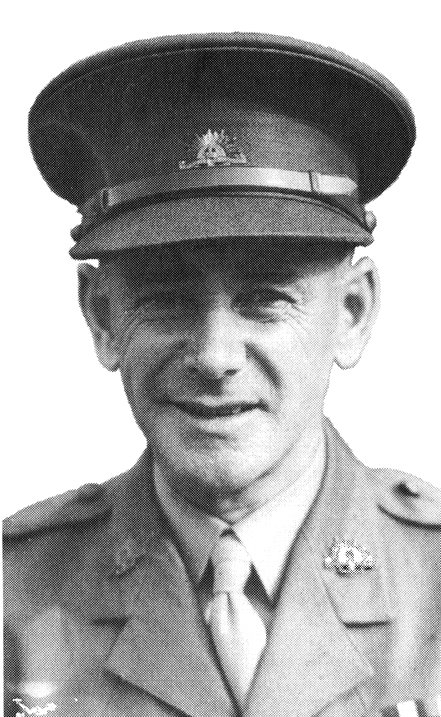
Major Bert Saggers was CO of the Special Reserve Bn that was ambushed at Sleepy Valley. He survived and made his way to Ulu Pandan where he found only 80 of his 420 men alive but all his officers killed. (photo Ian Saggers, Perth Australia )
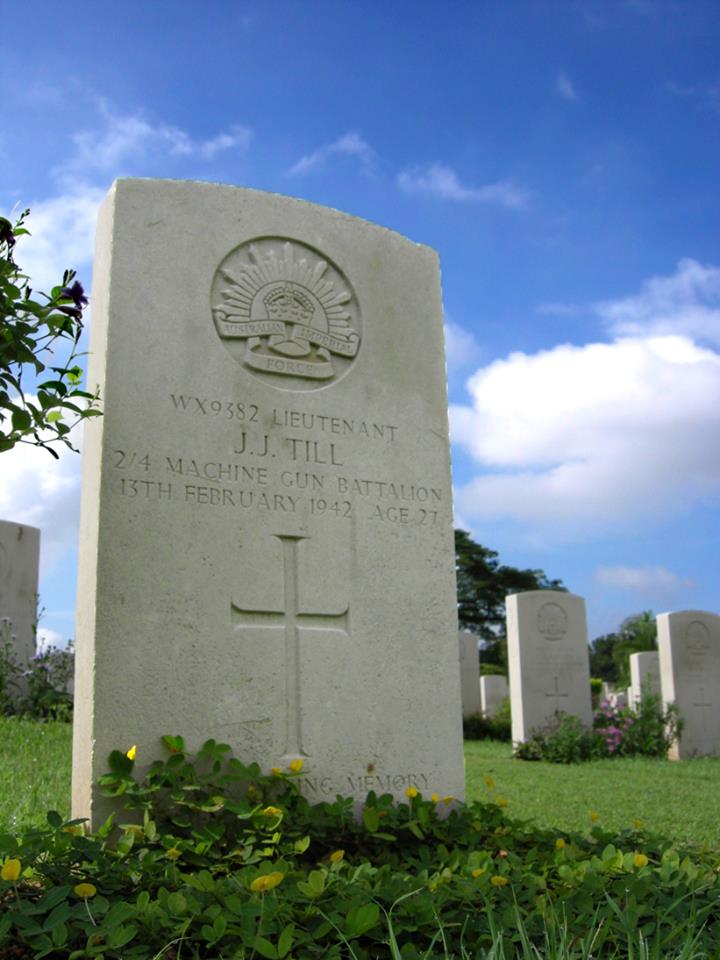
Lt Jimmy Till was an officer in Bert Sagger’s unit. He was buried near the spot where he was killed. This was near where today’s Ngee Ann Polytechnic Alumni Clubhouse stands. Picture is his grave now at Kranji War Memorial. (photo James Tann)
13th Feb 1942.
The noose tightens around Singapore City.
With the core of Singapore Island firmly in the hands of the Japanese Army, Gen.Yamashita moved his HQ from Tengah to the Ford Motors factory at Bukit Timah.
Strangely, the previous day ended somewhat with a lull in the fighting.
This allowed Gen Percival to continue finalising his last line of defence.
From Kallang Airfield to Paya Lebar, Paya Lebar to Braddell, Thomson Village to Adam Park, Adam Road to Farrer Road to Tanglin Halt, from Buona Vista across Pasir Panjang ending at Pasir Panjang Village.
The last unit to pull out , the 53rd Brigade, left Ang Mo Kio area around noon and the traffic along Thomson Road was so choked that Japanese planes had an easy time strafing the columns along the route.
Gen.Yamashita had actually feared that Gen.Percival would dig in and fight to the last.
In order to continue his feint, despite running low on ammunition and men, he launched attacks to give the British the appearance of Japanese strength.
He ordered the crack 18th Division to take Alexandra Barracks and the 5th Div & the Imperial Guards to attack the Waterworks at MacRitchie and the pumping station at Woodleigh.
Alexandra Barracks was the main British Army Ordnance Depot, where most of their equipment, stores and fuel storage, as well as the main Alexandra Military Hospital, were located
The attack on Alexandra Barracks began from Pasir Panjang (Kent Ridge) after 2 hours of heavy shelling at noon.
Waves of Japanese soldiers fought determined defenders from the 1st Malaya Brigade and the 44th Indian Brigade. Fighting was vicious and often hand to hand. The Malay Regiments were slowly overpowered with the Japanese winning height after height. The Gap, Pasir Panjang Hill III, Opium Hill, Buona Vista Hill, would fall one after the other but fighting would continue till the following day.
Over at MacRitchie, the Japanese 5th Division fought the 55th Brigade (1 Cambridgeshire & 4 Suffolk Regiments) to gain control of the reservoir. An all night tough fight including tanks forced the British Regiments all the way back to Mount Pleasant Road across Bukit Brown cemetery. The Suffolks lost over 250 men defending their ground.
The Japanese Army was now within 5 kilometres of the City on 2 fronts.
All this while, civilians casualties were mounting in the collateral damage from the Japanese shelling.
The City now had up to 1 million evacuees, most in dire straits without shelter, food nor water.
An Officer was to record travelling down Orchard Road:
“Buildings on both side went up in smoke…civilians appeared through clouds of debris; some got on the road, others stumbled and dropped in their tracks, others shrieked as they ran for safety. We pulled up near a building which had collapsed, it looked like a slaughter house; blood splashed, chunks of human being littered the place. Everywhere bits of steaming flesh, smouldering rags, clouds of dust and the groans of those who still survived.”
At the Battlebox, the new HQ at Fort Canning, Gen.Percival and his senior commanders were contemplating the latest orders from Gen.Wavell as well as an order from Churchill.
14th Feb 1942.
Prelude to Capitulation
Throughout the night of 13/14th Feb, sporadic skirmishes occurred both at Pasir Panjang and Adam Road.
At daylight 8.30am at Pasir Panjang Ridge , the Japanese charged up for a final assault on Hill 226 and Opium Hill facing heavy resistance from the 1st Malay Regiment. Bitter hand to hand combat lasted till 1.00pm in the afternoon when the Japanese gained control of the hills and in the process annihilating the Malay Regiment.
As the loss of the strategic ridge gave way, the Japanese advanced along Ayer Rajah in pursuit of Indian troops towards the British Military Hospital. It was then that the tragic incident occurred at the BMH with the senseless slaughter of wounded patients and medical staff.
There was also little relief along Adam Road. The Japanese, with Col Shimada’s Tank Regiment, pressured the line with a bulge through Bukit Brown, towards Caldecott Hill and Adam Park. Bitter fighting occurred around Hill 95 and Water Tower Hill (today’s Adam Park/Arcadia).
The Imperial Guards Division harried the eastern battle line at Paya Lebar and were near to capturing the Woodleigh pump station by mid day.
At British HQ in the BattleBox at Fort Canning, Gen.Percival conferred with his field commanders.
Brigadier Simson advised that the water situation was extremely grave with the threat of epidemic.
Gen Heath, commander of British Forces, and Gen Bennett, commander of Australian Forces, urged Gen Percival to surrender. Percival refused to yield, having direct orders from Churchill via Gen.Wavell, the Commander in Chief based at Java, not to surrender and to fight to the last man.
However, Gen.Percival informed Gen.Wavell that the enemy was close to the City and that his troops were no longer in a position to counter attack much longer.
Gen. Wavell sought permission from PM Churchill to allow Gen.Percival to consider the option of surrendering.
Churchill replied to Gen. Wavell:
“You are, of course, sole judge of the moment when no further result can be gained at Singapore., and should instruct Percival accordingly, C.I.G.S. concurs”
With that, the final key was inserted into play for Singapore. (But the permission for Percival to consider surrendering did not go out to Percival until the next morning of the 15th.)
*CIGS = Chief of Imperial General Staff
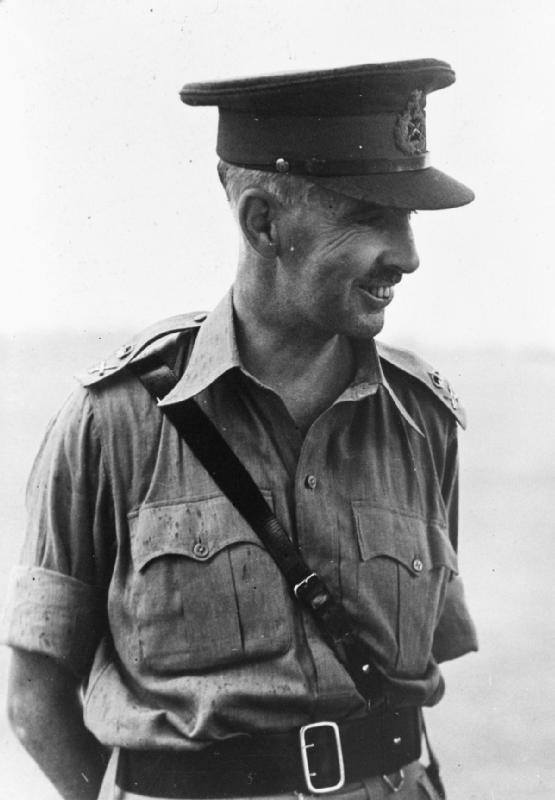
Lieutenant-General A E Percival, General Officer Commanding Malaya at the time of the Japanese attack.(photo Imperial War Museum London)
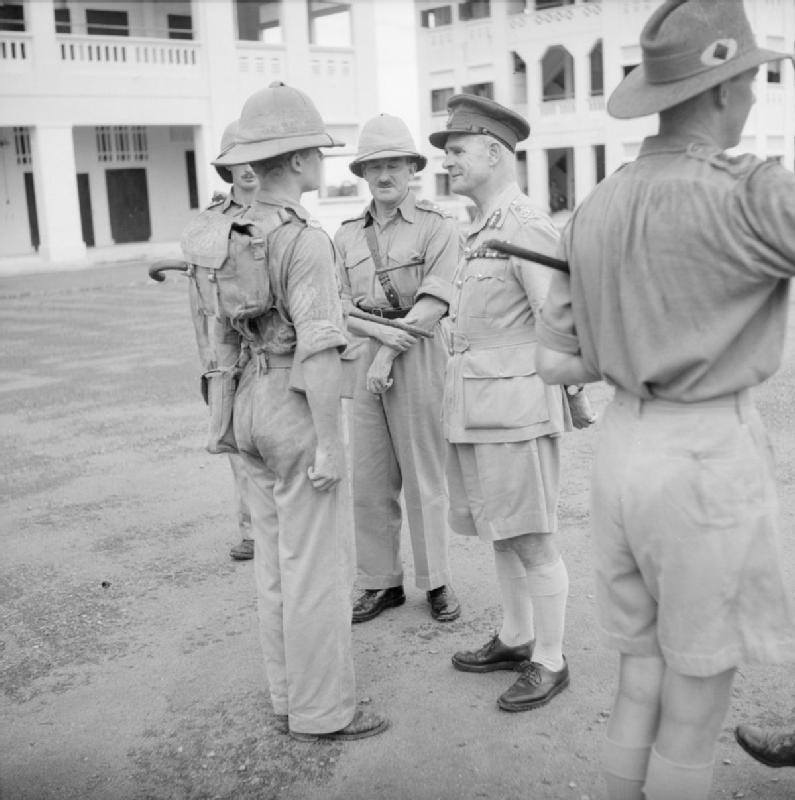
General Sir Archibald Wavell, C-in-C Far East, and Major General F K Simmons, GOC Singapore Fortress, inspecting soldiers of the 2nd Gordon Highlanders, Singapore, 3 November 1941. (photo Imperial War Museum London)
15th Feb 1942.
Chinese New Year – The Year of the Horse
There was absolutely no joy in celebrating Chinese New Year in 1942. The country was in shambles.
The foreboding fear of the encroaching Japanese military, preceeded by tales and rumours of their atrocities in China all portent the unknown that lay ahead.The British masters and their families had all bugged out. What did this mean for the locals now?
A Japanese flag could he seen flying from the top of the Cathay Building! Was this the end?
For the locals, especially for the Chinese, it was going to be the start of three and a half horrifying years.
Morning of 15th Feb saw the opposing forces holding most of their ground, with infiltration mainly by the Japanese within the eastern sector reaching Kallang Airfield. In the west, Japanese troops reached Mount Faber.
Gen. Percival convened his most senior officers at the Battlebox at 9.30am for the latest status reports.
Brigadier Simson reported that water supply could not be maintained for more than a day due to breakages everywhere which could not be repaired. Water was still flowing despite the pumps and reservoir being in enemy’s hands!
The only fuel left were what remained in each vehicle and at a small pump at the Polo Club.
Reserved military rations could last for only a few more days.
With unanimous concurrence of all present, the decision to cease hostilities and to capitulate was made.
A deputation comprising Brigadier Newbigging, HQ Chief Admin Officer, the Colonial Secretary Mr Fraser and Major CH Wild as interpreter, left Fort Canning for the enemy lines at Bukit Timah Road.
At the junction of Farrer Road, they proceeded on foot with Union Flag and a white flag across the defence line for 600 yards where they were met by the Japanese soldiers. They were later met by Col Sugita who refused their ‘invitation’ to the City for negotiations. Instead, Col Sugita demanded that Gen.Percival was to personally surrender to Gen.Yamashita.
To acknowledge this condition, the British were to fly a Japanese Flag from the top of the Cathay Building.
At 5.15pm, the British surrender party drove up to the Bukit Timah Ford Motors factory.
The delegation was made up of Lt-Gen AE Percival, Brigadier Newbigging, Brigadier Torrance, Gen Staff Officer Malaya Command, and Major Wild, the interpreter from III Corps.
Though Gen.Percival tried to negotiate for some terms for his men, Gen Yamashita thought that he was playing for time and pressed Percival for an unconditional surrender, telling him that a major attack on the City was scheduled for 10.30pm that night and any delay, he might not be able to call off the operation in time.
“The time for the night attack is drawing near! Is the British Army going to surrender or not?”
Banging the table he shouted in English “Answer YES or NO.”
At 6.10 pm. Gen.Percival signed the surrender document, handing Singapore over to the Japanese Empire.
************************
Read about the Battle at Bukit Brown on 14 February, 1942, a day before the surrender to the Japanese, here
And the latest on missing soldiers here
All Things Bukit Brown broke the news that Bukit Brown had been included on the list of the World Monuments Watch 2014, on the evening of Tuesday 8th October, 2013. It was the first listing for Singapore, and international recognition of Bukit Brown as a heritage site.
24 hours later, on Thursday 10th October, 10 am, a media session to meet the Brownies behind the submission to the World Monuments Fund, was held at Bukit Brown, under the rain tree at the roundabout. It was an appropriate setting, as this is the spot where all our guided walks begin.
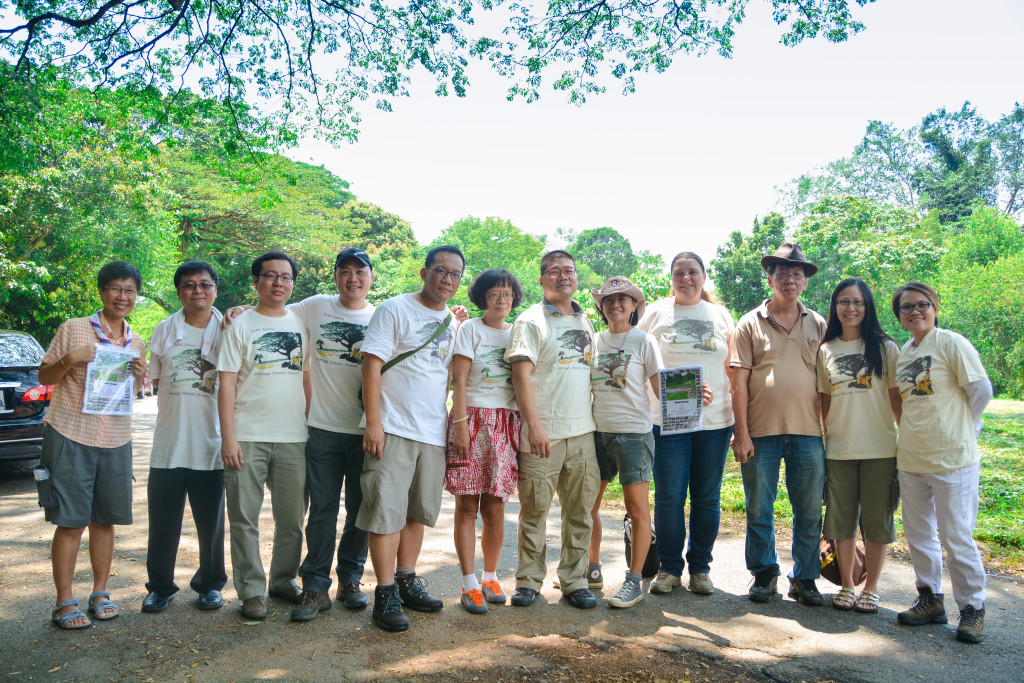
Supporters and the Brownies behind the submission for World Monuments Watch 2014 listing (photo Terry Xu)
Full video recording by Jasmine Ng here
This is a compilation of highlights and quotes of the media coverage online, in the press and in the broadcast media from 9 October to 13 October, 2013
10 October Channel News Asia TV report on Bukit Brown’s World Monuments Watch listing.
Interest group hopes that this(the listing) will lead to more engagement and a more sustainable strategy for development. Claire Leow “We hope this listing by shining international attention on Singapore will also help Singapore’s bid to get UNESCO listing for Botanic Gardens and of course eventually Bukit Brown as well and eventually other sites as well in Singapore”
The full CNA TV report here
Claire Leow, co-founder of All Things Bukit Brown, said: “It goes beyond what we’ve done for Bukit Brown; it’s more like what we can do for Singapore.
She added: “I hope it shows that we are serious, that we want a seat at the table, just so we can present what we have heard from the community, what we have heard from the people who have encouraged us, and we can share their voices too.
The full online CNA report here.
10 October Zaobao
“I hope to use this opportunity open a dialogue with the government and find a sustainable path to development. I do not think that conservation of heritage monuments and development has to be confrontational. On the contrary, we hope that conservation can aid development and vice-versa“
She pointed out that at present, talks about development and conservation are always framed in terms of trade-offs – e.g. do we want to keep land for our ancestors or make room for our descendants. Why do we not talk about other issues, e.g. are we not willing to let go of a site that could potentially be a world heritage site? In the face of global warming and the need for nature to maintain stable temperatures, can we afford to lose a site of certain environmental value to us? Claire Leow.
The full Zaobao report with translation here
10 October The Online Citizen (TOC)
“There’s more to Bukit Brown, than my own family. And I realised the things I do not know about this place and it’s going to go. And that nothing will be left for my children, grandchildren and great grand children. ” Ong Hui Lin (descendant with 3 ancestors buried in Bukit Brown)
“Yes Bukit Brown is now on the World Monument Watch but it is more than that. We nominated Bukit Brown because it is significant to our history, culture and society. I hope that this will prompt people to look into all 3 aspects.” Claire Leow
The full video report on TOC here
10 October Razor TV online
“Now with the listing, it gives credence to the fact that this is a world class heritage site. So my sense is that one has to think again about the questions,, I appreciate the challenges that urban planners face. But maybe they don’t have a larger picture and that larger picture is history and heritage, history that affects out identity” Chew Kheng Chuan (descendant with 8 ancestors buried in Bukit Brown”
“I am very mixed because I am a road user and I love homes. Homes for my children. But for Bukit Brown, it is very painful because when we lose it, we would never get back the very essence. the soul” Ong Hui Lin (descendant with 3 ancestors buried in Bukit Brown)
The full online video of Razor TV here
10 October the breakfast network
“They (All Things Bukit Brown) hope more researchers, historians, cultural studies students et cetera would step up and get involved in Bukit Brown in one way or another. “We need to think differently; we need to reframe the conversation,” said Ms Leow, who wanted people to stop seeing the trade-off as space for the living vs space for the dead. Rather, she wants to foreground Bukit Brown as a potential world monument site, with environmental value, that is at stake.
The full report of the breakfast network available here.
All Things Bukit Brown clarifies on the report : We did not submit the application for World Monuments Watch listing to “throw a spanner in the roadworks”. We submitted it because we wanted recognition, to heighten awareness and draw attention to Bukit Brown as a heritage and nature site worthy of preserving.
10 October (The Economist) Banyan Blog
“In an interview republished in his latest book, Lee Kuan Yew, Singapore’s elder statesman, who left the cabinet two years ago but still reflects the views of many in the government he led for so long, is, characteristically, yet more blunt in an interview reprinted in his latest book: “if we need the land, and we have to dig up the whole of Bukit Brown to build on it, and put the ashes in a columbarium, we will do it.”
The Brownies point out that the government presents a false choice between space for the dead and space for the expanding population that Singapore needs to sustain its growth. Bukit Brown is also for the living, and for future generations interested in how Singapore became what it is today.”
The full report on the Banyan here
10 October : Singapore Heritage Society statement on the listing:
This is the first time a Singapore site has been included in the World Monuments Watch. Together with the Singapore Botanic Gardens’ UNESCO nomination, Bukit Brown’s inclusion represents widespread international recognition of the historical importance of local heritage sites. Indeed, Bukit Brown’s narrative of early immigrants and regional histories complements the Botanic Garden’s narrative of colonial empire to provide a more complex and complete story of Singapore.
13 October Yahoo News
“With the World Monuments Watch listing, the first time a site in Singapore has been included, atBB thinks that Bukit Brown and the Gardens, which are located fairly close to each other, could be paired up for a stronger nomination, said (Catherine) Lim.
“What we’re saying is there’s an opportunity here to relook our application (to UNESCO),” she said. “It has started, but it’s going to take two years (to complete), so why not explore? We’re offering up an opportunity of a possibility… It’s for the government to consider this. I’m not sure whether they actually have considered the actual status that’s accorded Bukit Brown being on the list.”
The full report on Yahoo News here
A Question of Public Value : Bukit Brown . a thought essay by Z’ming Cik was submitted for the “My Say” category of the blog on 13th October.
9 October 2013 Straits Time (ST) Report
SINGAPORE’S Bukit Brown Cemetery has been named as an at risk site on the 2014 World Monuments Watch – a biennial listing by the World Monuments Fund which compiles cultural heritage sites that are threatened around the world.
Bukit Brown Cemetery, where the graves of pioneering Chinese immigrants to Singapore since the mid-nineteenth century stand, is one of 67 sites from 41 countries and territories.
More on the ST report here
9th October Channel News Asia (CNA) Report
SINGAPORE: Singapore’s Bukit Brown Cemetery has been placed on the 2014 World Monuments Watch, which compiles cultural heritage sites threatened around the world.
More CNA report here
All Things Bukit Brown clarifies on the report below by ST News October 10, 2013 : When asked by the reporter about the call for a moratorium to stop road works issued in March 2012, the a.t.bb’s response was “we have moved on from that” as opposed to what was reported ” the group, which hosts weekly guided tours at the site, is also sticking to a call it made last year for a moratorium on plans for Bukit Brown and for more public engagement with the Government.”
ST News Oct 10, 2013
All Things Bukit Brown, an interest group which is keen to preserve the site’s heritage and habitat, nominated it to the New York-based World Monuments Fund watch list. It was picked from 248 nominations – making it the first time that a Singapore site has made it to the list. The WMW citation said of the road and redevelopment of the site: “In destroying the cultural landscape of Bukit Brown, it is a loss to all of society.”
The non-profit World Monuments Fund has issued its watch list since the 1990s to raise awareness about threatened cultural sites. It has helped to helped restore sites in more than 90 countries, including the historic enclave of Georgetown in Penang .
The full ST report here
From The Diplomat on 30 October 2013
Abstract : “We must be reminded that there are other land uses that take up enormous amounts of space, yet hardly anyone is questioning the utility of those spaces. Singapore has 18 golf courses, one of the highest numbers per country area in the world. They take up a total of 1,800 hectares. By contrast, Bukit Brown takes up 233 hectares; one-ninth of that area. Does Bukit Brown seem very big now?”Else Teo, a freelance researcher specialising in history and heritage issues.
by Szeto Hiu Yan
The World Monuments Fund (WMF) select sites that are under threat on its watch list once every 2yrs. 3 days ago, they announced the 2014 list which included 67 sites from 41 countries selected from a list of 248 applications.
At a news conference held on location yesterday, a.t.BB (All Things Bukit Brown) said that the successful listing did not imply that it is putting pressure on the government or is attempting to block the impending construction of the road which would affect some graves.
As one of the founders of atBB, Claire Lim said “I hope to use this opportunity open a dialogue with the government and find a sustainable path to development. I do not think that conservation of heritage monuments and development has to be confrontational. On the contrary, we hope that conservation can aid development and vice-versa. “
She pointed out that at present, talks about development and conservation are always framed in terms of trade-offs – e.g. do we want to keep land for our ancestors or make room for our descendants. Why do we not talk about other issues, e.g. are we not willing to let go of a site that could potentially be a world heritage site? In the face of global warming and the need for nature to maintain stable temperatures, can we afford to lose a site of certain environmental value to us?
Claire is of the opinion that government and society should take this opportunity to reframe the conversation and exercise our mutual imaginations to allow more perspectives to bear on this matter. This frame of mind will expand the possibilities in our dialogue.
a.t.BB also shared its plans for Bukit Brown in their application to WWF. They hope to collaborate with National Heritage Board (NHB) and NParks and turn Bukit Brown into a cultural heritage site and a nature park to attract visits. Bukit Brown will retain most of its original state with the addition of basic facilities such as rest rooms. a.t.BB will continue to provide free guided walks and to increase its community outreach especially towards the young.
With the listing, a.t.BB hope to heighten overall public awareness of BB’s repository of cultural heritage both locally and abroad. E.g. instead of expensive overseas trips to learn about culture and heritage , educational institutions could look first at visits to local sites. a.t.BB also hopes to promote edu-tourism by attracting more visits by foreign students and overseas academic scholars.
As the a.t.BB current expenses are still manageable, it does not have any plan to apply for WWF funding.
According to Catherine Lim, another founder, WMF routinely provides assistance to countries that wish to elevate WMF sites to UNESCO sites. She therefore hopes that Singapore’s current UNESCO application for Botanical Gardens could in future be twinned with Bukit Brown to increase the chances for both sites to be listed. a.t.BB also hopes that it could work closely with Penang and Malacca as UNSECO sites, to raise the profiles of both countries’ cultural heritage
Catherine said that since the founding of BB in Dec 2011, over 7,000 people have been acquainted with Bukit Brown, through the free tours conducted by it. a.t.BB could also learn from the other WMF listed sites about how to raise awareness of BB.
The report first appeared in Zaobao on 11 October 2013 and is translated by Brownie Fabian Tee.
Zaobao’s Sunday 13 October round-up of quotable quotes also included the quote by Claire Leow:
“I absolutely do not think that the dialogue between preservation and development is necessarily confrontational. I hope that preservation of cultural heritage can aid urban development and vice-Versa.” – said co-founder of all things Bukit Brown Claire Leow who expressed the hope that that the listing of BB in the World Monuments Watch 2014 would open more channels of dialogue to find a common path for sustainable development.
The Chinese report follows:
武吉布朗学会: 武吉布朗列世遗观察名单并非向政府施压
司徒晓昕 报道
szetohy@sph.com.sg
武吉布朗坟场成功列入世界历史遗址观察名单后,负责申遗的武吉布
世界历史遗址基金会(World Monuments Foundation)每两年选出濒危的世界遗产,将之列入观察
武吉布朗学会(All Things Bukit Brown)昨早在武吉布朗举行的记者会上表示,武吉布朗成功申
学会创办人之一廖雪珠说:“我们希望趁此机会展开更多对话,一起
她指出:“我们在讨论这个课题时总要提到权衡的问题,而这最后往
廖雪珠因此认为,政府和社群应趁此机会重塑对话的方式,大家应该
武吉布朗学会也叙述了申列过程中,向世界历史遗址基金会提出的未
如今武吉布朗列入了观察名单,学会希望这能提高国人和国际人士对
由于学会目前的经费不高,因此不打算向世界历史遗址基金会申请资
另一名创办人林雪芳说,世界历史遗址一向为希望申列世界遗产名录
她说:“学会自2011年12月创立后开始提供免费导览团,至今
武吉布朗学会希望在武吉布朗坟场成功申列世界历史遗址观察名单后
本地和外国人对武吉布朗的认识能有所提高。(谢智扬摄)
Dateline 6 October 2013
A tomb with a loving epitaph was found by Brownie Simone Lee at Kopi Sua today . It reads:
A bitter grief
A shock severe
to part with one
I love so dear
My loss is great
I wont complain
But hope through God
to meet again
In memoriam
my dearly
beloved father
Gone but not forgotten
Kopi Sua – a clan cemetery – is part of the Greater Bukit Brown Complex which includes Bukit Brown Municipal Cemetery and the adjoining clan cemeteries of Seh Ong and Lao Sua. Together they have a combined total of 200 tombs
At Bukit Brown, one often finds couplets on the “pillars” of the tombs. They embed auspicious meanings and also tributes to the departed.
The tomb of Chen Yen Soon has a pair which speaks of the rewards which await those who live a good life.
为善百世興 Hundred years of prosperity for kind acts.
積德千年好 A good thousand years for those who accumulate good deeds.
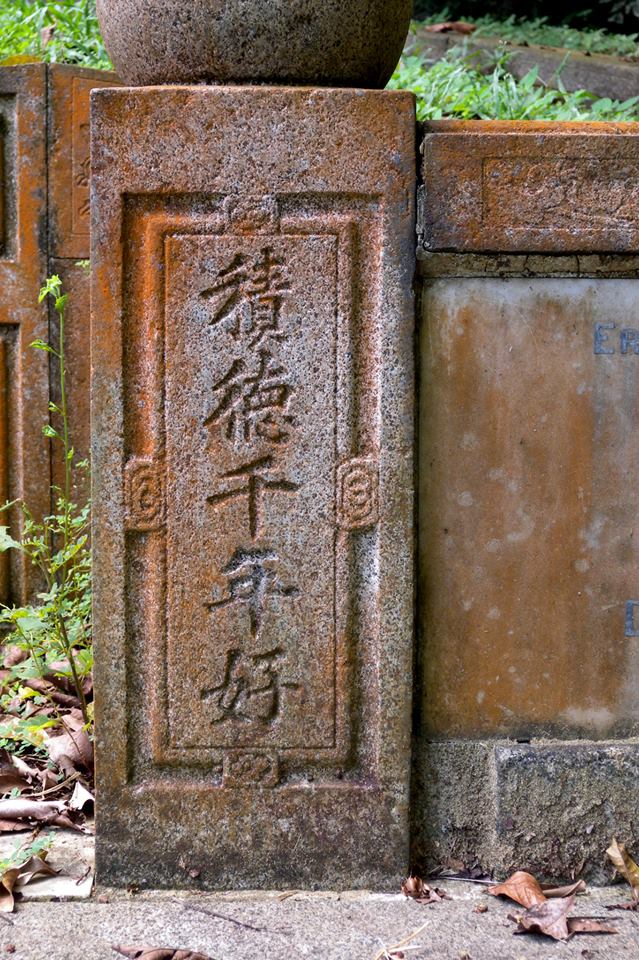
積德千年好 A good thousand years for those who accumulate good deeds. (photo Khoo Ee Hoon)
An inscription found in a temple in Silat Road on a photo of the Earth Deity or Tua Pek Kong, evokes the same sentiments.. Brownie Fabian Tee summarises:
The couplet reads fortune with virtue inspires respect from a thousand families (from many) the uprightious shall inherit the earth as deities for innumerable (ten thousand) generations. When read together, it’s an allegory to 福德正神。
More examples of couplets here
Mian-Yu-Ting Cemetery, Johor (Part II)
by Choo Ai Loon
(Ai Loon continues from part one of her blog post on Mian-Yu-Ting Cemetery )
Among the tombstones at the Mian-Yu-Ting , is one belonging to Wu You-Xun (邬有询), which pays tribute to his alma mater, Chinese High School (華僑中學 in traditional Chinese characters)
A student with a promising future, Wu You-Xun (邬有询) aspired to become a doctor, In 1920, after completing his Senior Cambridge examination (equivalent to GCE “O” levels) , he enrolled at Chinese High. He graduated among the first batch of students, two years later. In the graduation year book, he was described as a hardworking student who “had no time to chit-chat as time was too precious”.
Wu excelled in English and was a committee member of an English speech society, which I presume was the “Nanyang version of the Toastmasters Club”, and chief editor of an English magazine.
But alas! Wu passed away at just 22 years old, a year after graduation. Inscribed on his tombstone is “graduate of Chinese High School” is a reflection of how proud he must been of his school
In contrast, one grave has only 3 characters inscribed but no name. Gu-ren-mu (古人墓), literally means “the tomb of someone who has passed away”.
This typical Teochew tomb which resembles an arm chair, a pair of couplets in red on the scroll pillars.
The arms of the tomb curve gracefully and there is a dragonhead carved on it The usual practice of depicting the whole dragon it seems has been adapted to just a dragon’s head. I have observed these variations in motifs and representations. This dragon appeared benign compared to the fierce-looking ones found in older tomb carvings.
Another grave had steps leading up the tombstone perhaps imitating a stupa, influenced by Buddhism.
The Tomb of She Mian-Wang
She Mian-Wang (佘勉旺), belonged to a wealthy Teochew family. The surname “She” is more commonly spelt as Sia or Seah.
The She Mian-Wang family profile in Johor parallels that of the Seah Eu Chin in Singapore. Both families had made their fortune from the cultivation and trade of gambier.
Seah Eu Chin’s tomb was discovered in 2012 within Greater Bukit Brown, in a forested area called Grave Hill in Toa Payoh West, Singapore. He co-founded and led the Ngee Ann Kongsi in Singapore, to look after the religious needs and welfare of early Teochew migrant workers.
Similarly, She Mian-Wang was an important figure in the Ngee Heng Kongsi The enormous plot size and the expansive tomb arms of She’s grave reflects his status and wealth in those days. Interestingly, his tablet is enshrined and worshipped at Pu Zhao Chan Si Temple (普照禅寺) in Singapore.
So could these two powerful families in the Teochew community be related? I leave you with this parting thought .
My thanks once again to Mr Bak Jia How and Mr Pek Wee-Chuen for the insightful and enjoyable tour of Mian-Yu-Ting.
Thanks to Mr Bak Jia How and Mr Pek Wee-Chuen for the insightful and enjoyable tour.
Choo Ai Loon, works as a translator and is passionate about art and heritage, She supports Hair for Hope for children with cancer. She blogs at http://chooailoon.wordpress.com/2013/05/05/hair-for-hope-2013/
霹雳五帮籍贯坟墓的造型与文化
李永球
霹靂州太平華聯中學初中三畢業,自中學開始對本邦歷史民俗 深感興趣,畢業後,一面協助父親小販事業,一面進行田野調查工作。並以李桃李、峇峇球等筆名,發表文章於報章雜志上。2004年成為全職的文史田野工作 者,足迹踏遍我国多个地方及国外多个国家。他也是《星洲日报·田野行脚》專欄作者。
本课题主要调查霹雳州太平、实兆远及怡保等地的华人坟墓,囊括福建、客家、广府、潮州及福州五帮籍贯之坟墓造型。霹雳州是个华人聚居的州属,早在十九世纪中叶,就有华人到来这里开采锡矿,并聚居于此。
边镇遗石:边佳兰义山与墓碑考察
莫家浩
2002年寬柔中學畢業,負笈中國大陸,先後畢業於廣州暨南大學與北京大學國際政治系,獲碩士學位。回國後,曾執教寬柔中學古來分校歷史科,現為業餘文史工作者。
邊加蘭在1830年代便有華人活動的記錄,卻異常缺乏文字記載。至今仍保存較為完整的義山群,早至1870年代的上千座墓碑,記錄了先民的籍貫、名字與宗族關係,為研究者提供了珍貴的一手資料。
English Introduction to the talks :
1) The Architecture and Culture of Tombs Belonging to the Five Dialect Groups in Perak
Lee Eng Kew
Eng Kew’s interest in local history and traditional customs manifested itself when he was in secondary school. After graduation, he helped out at his father’s hawker stall while pursuing his interests. In 2004, he became a full time researcher. He also writes a column for the Sin Chew Jit Poh.
This talk focuses on the architecture of tombs in Chinese cemeteries in Taiping, Ipoh and Sitiawan. The tombs examined belong to the Hokkien, Hakka, Cantonese, Teochew and Hock Chew styles.
2)A Study of the Chinese Cemetery and Tombstones in Pengarang
Bak Jia How
A graduate of Jinan University in Guangzhou, Jia How obtained his Masters in the School of International Studies in Beijing University. He was a history teacher in the Kulai branch of Foon Yew High School. He is currently a freelance historian.
Although there were Chinese settlers in Pengarang by the 1830s, historical texts make scant mention of them. In view of this, the old tombstones found in the cemeteries in the area are an invaluable resource for historical research on the chinese communities of Pengarang.
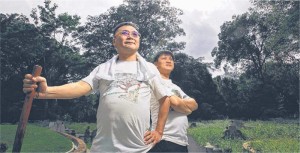
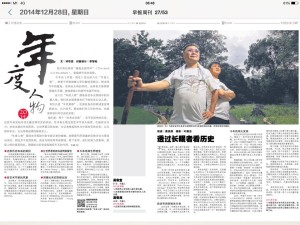
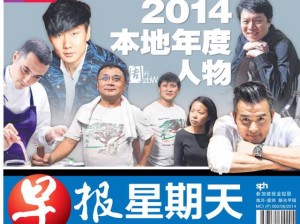
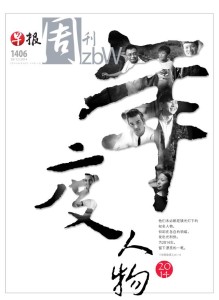

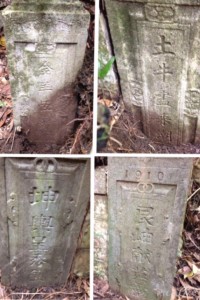
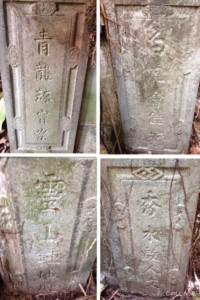
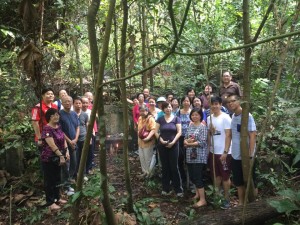
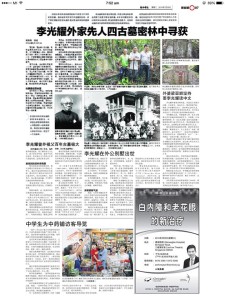
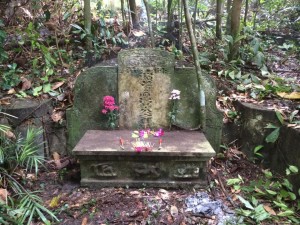
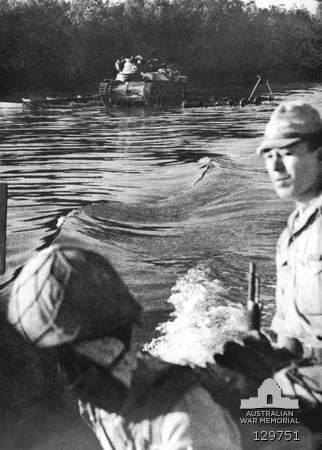
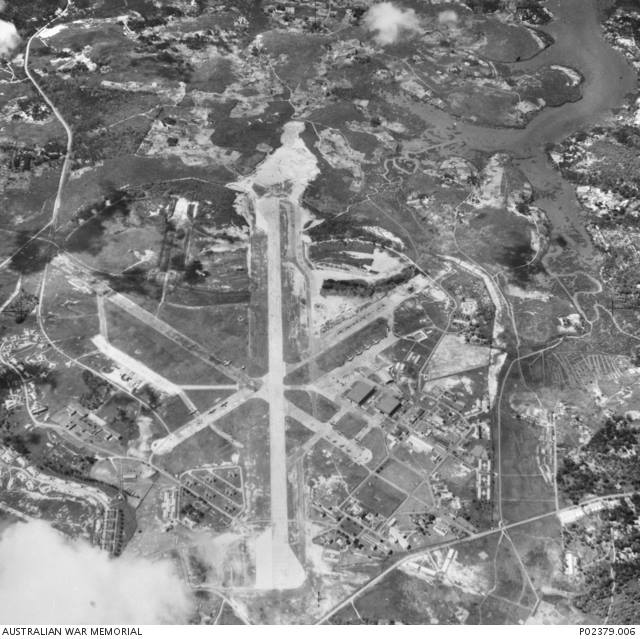
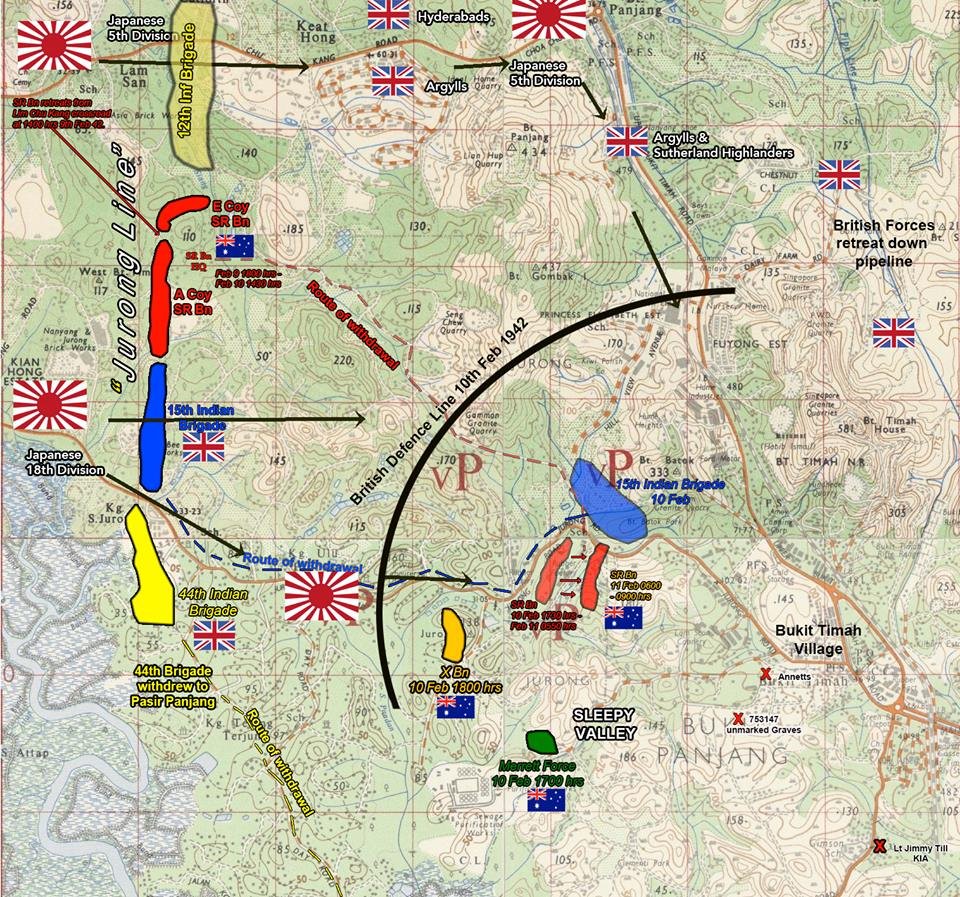
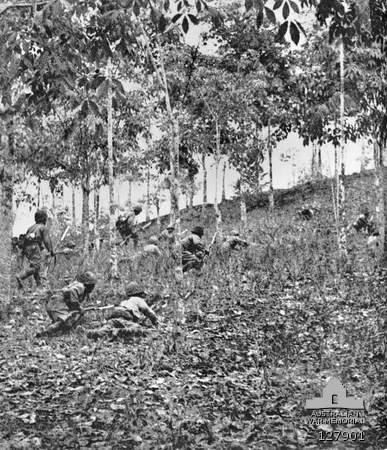
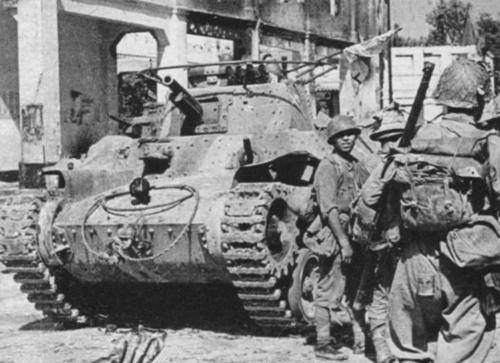
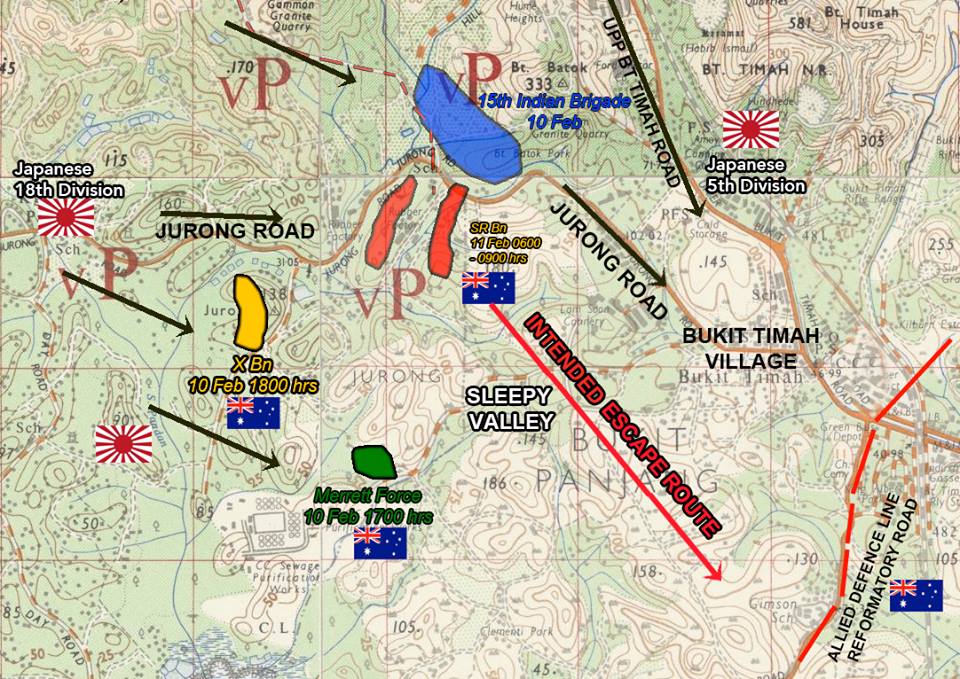
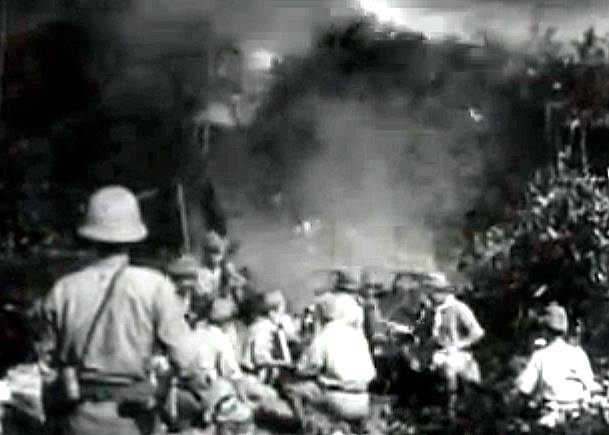

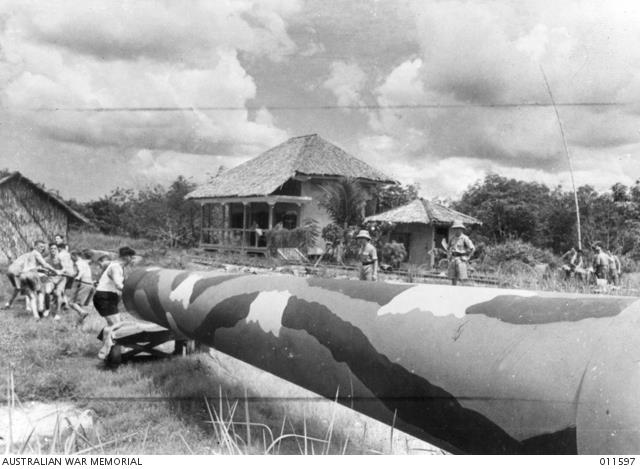

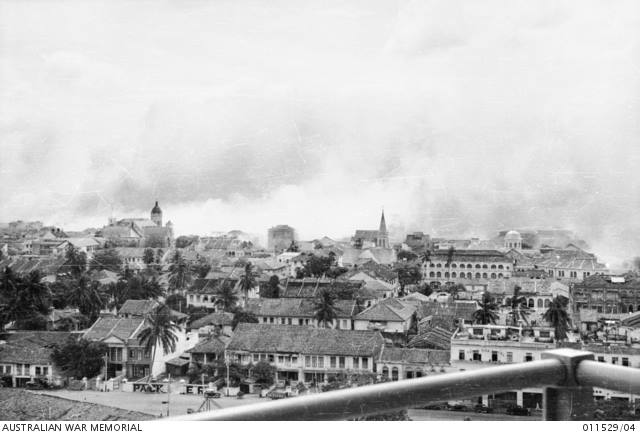
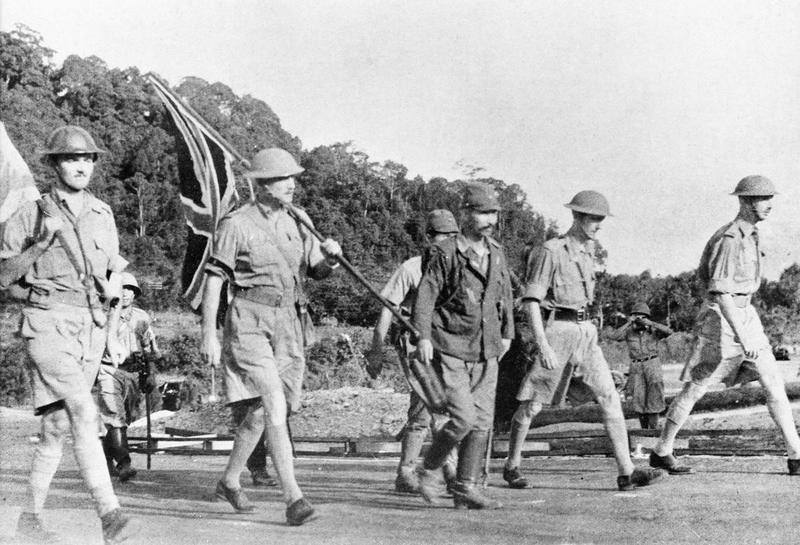
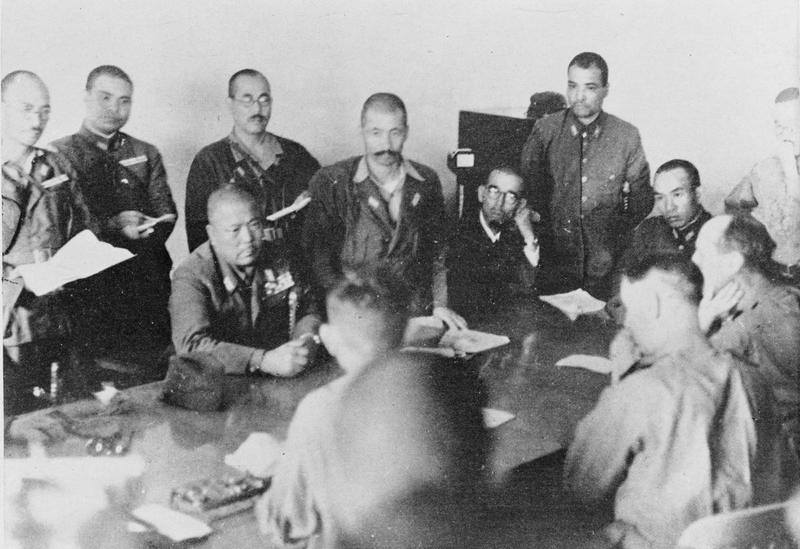
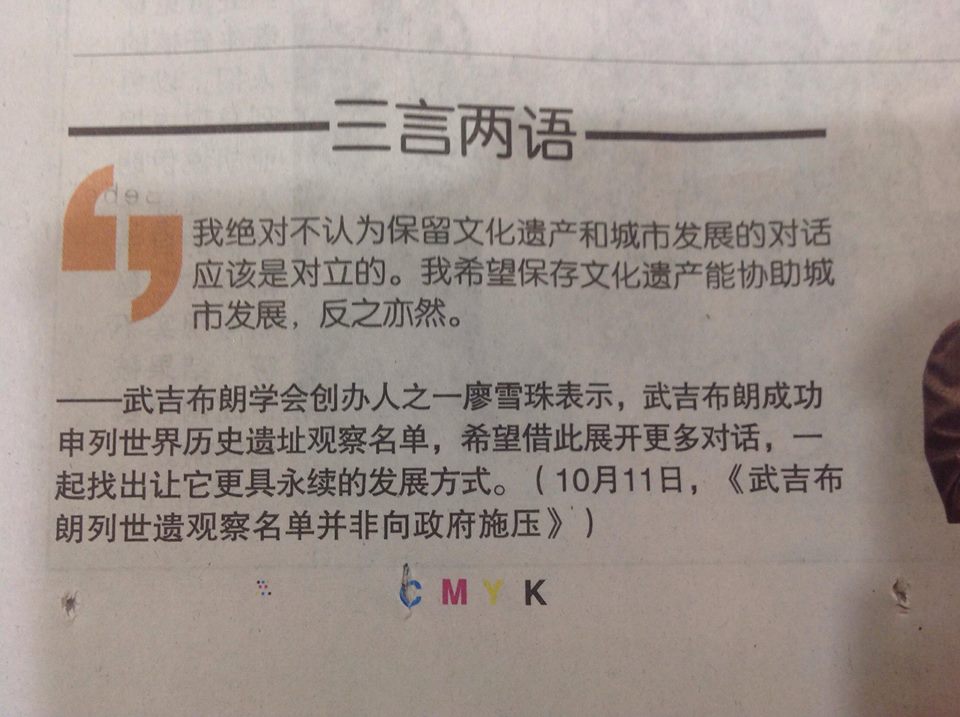

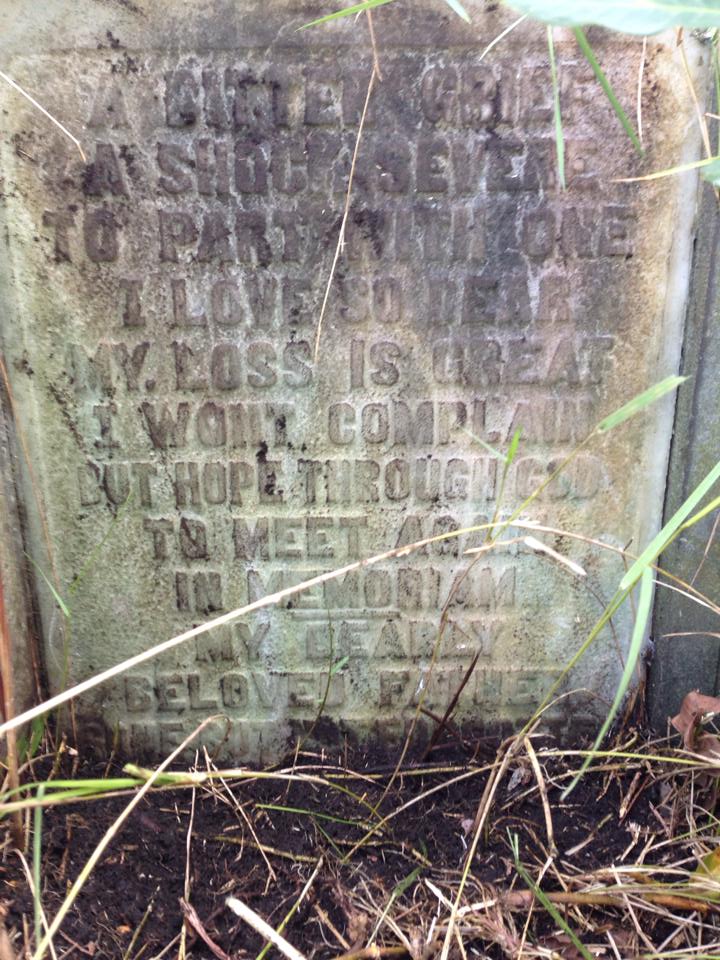
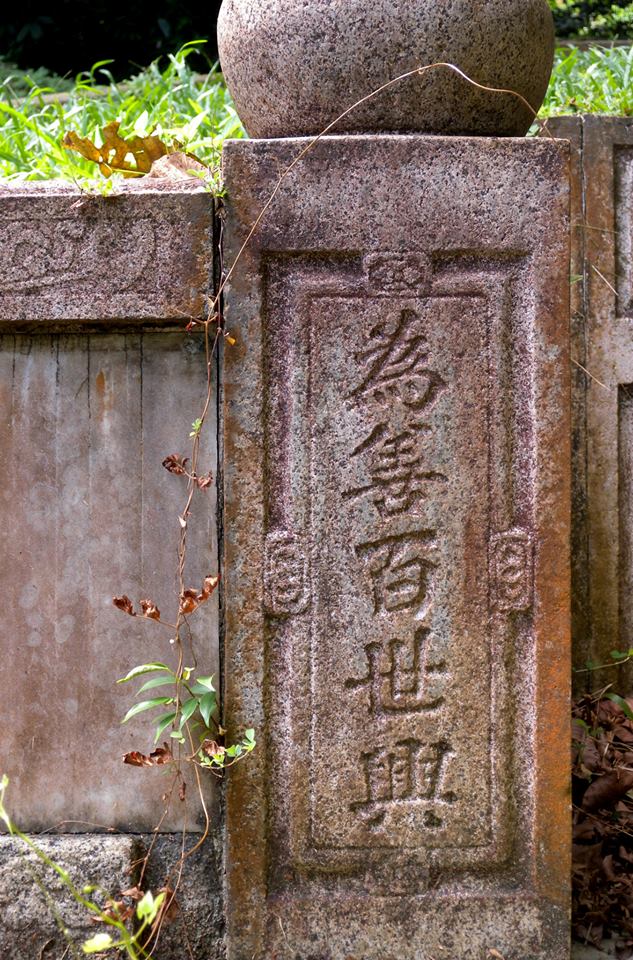
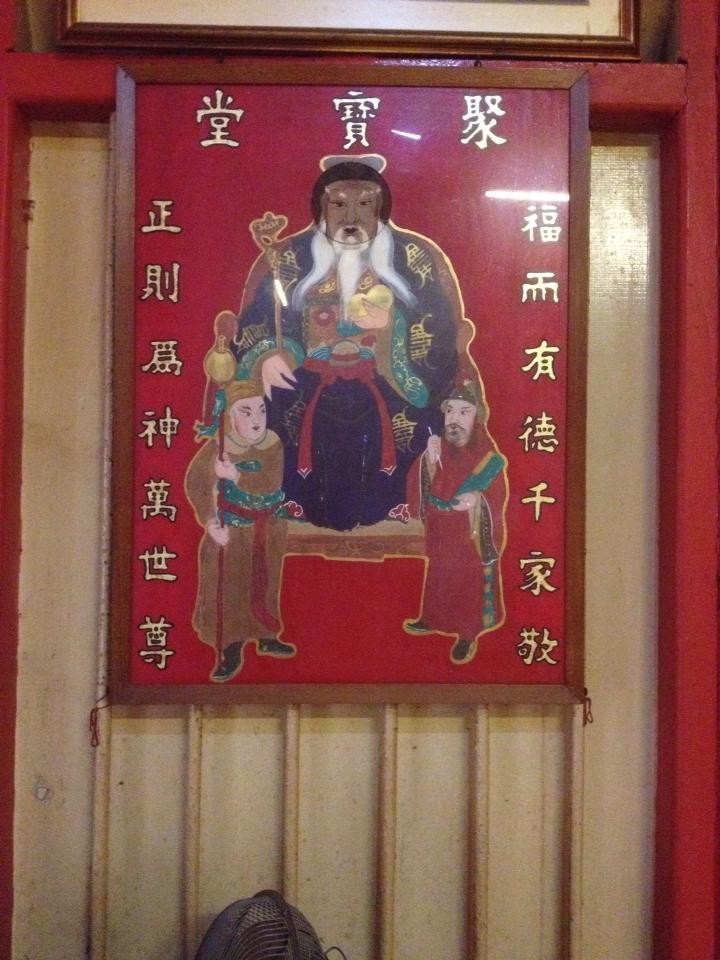









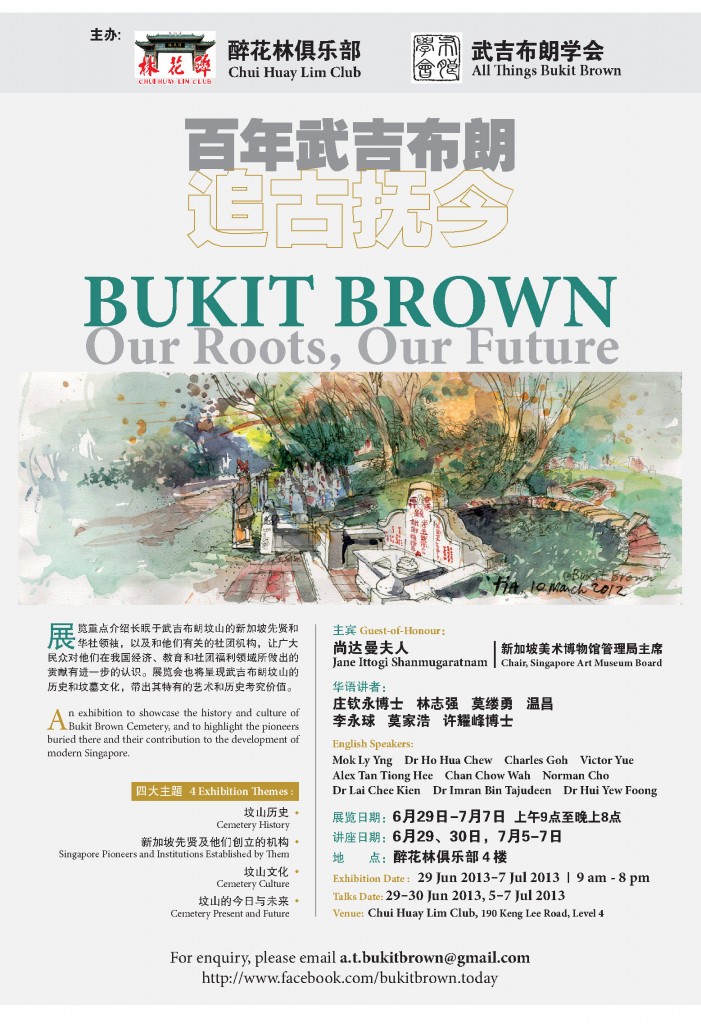
Recent Comments